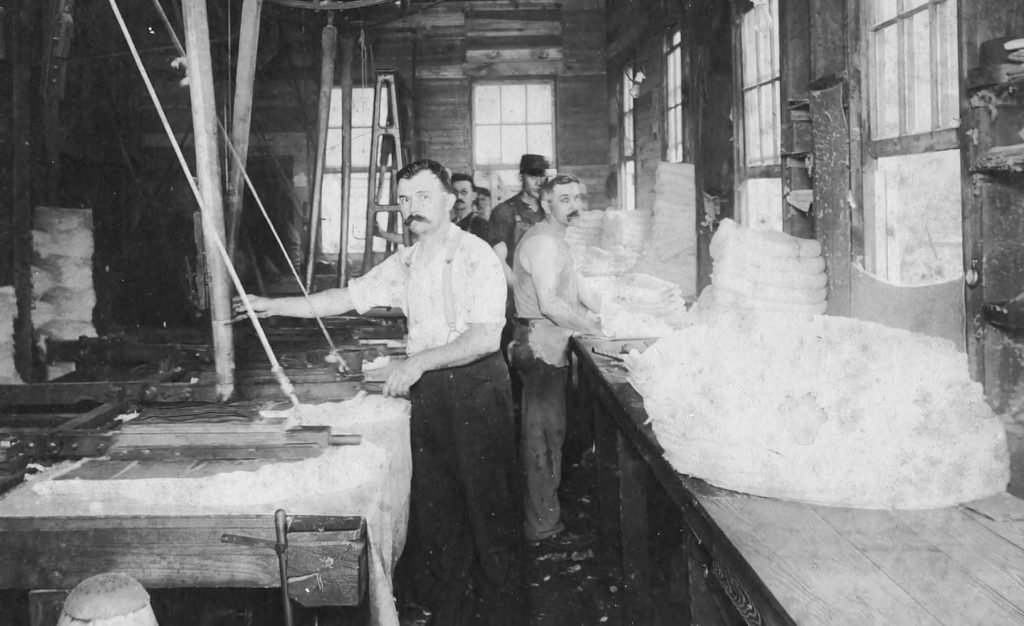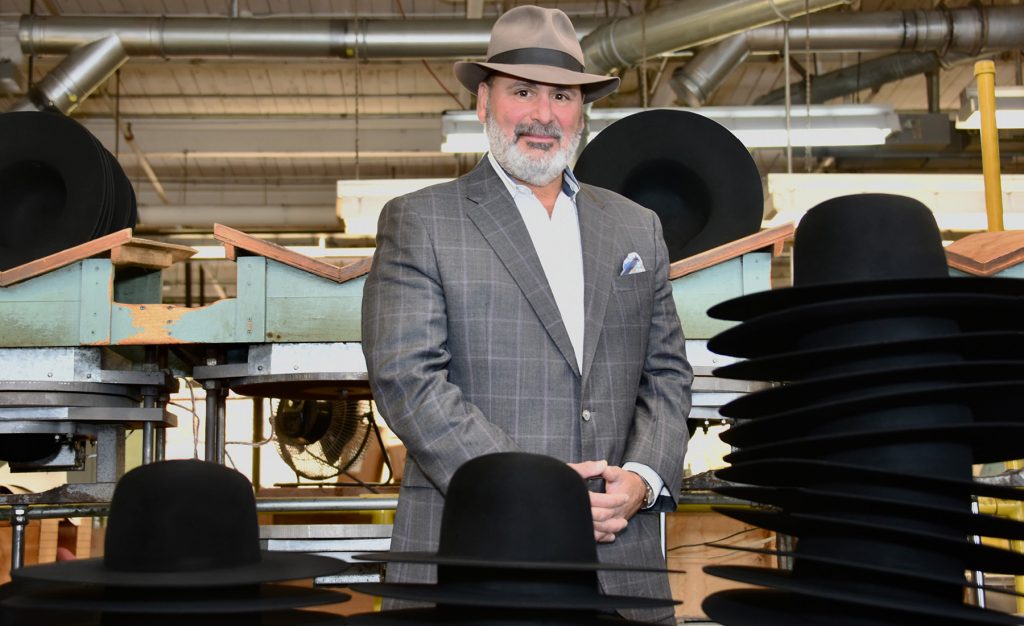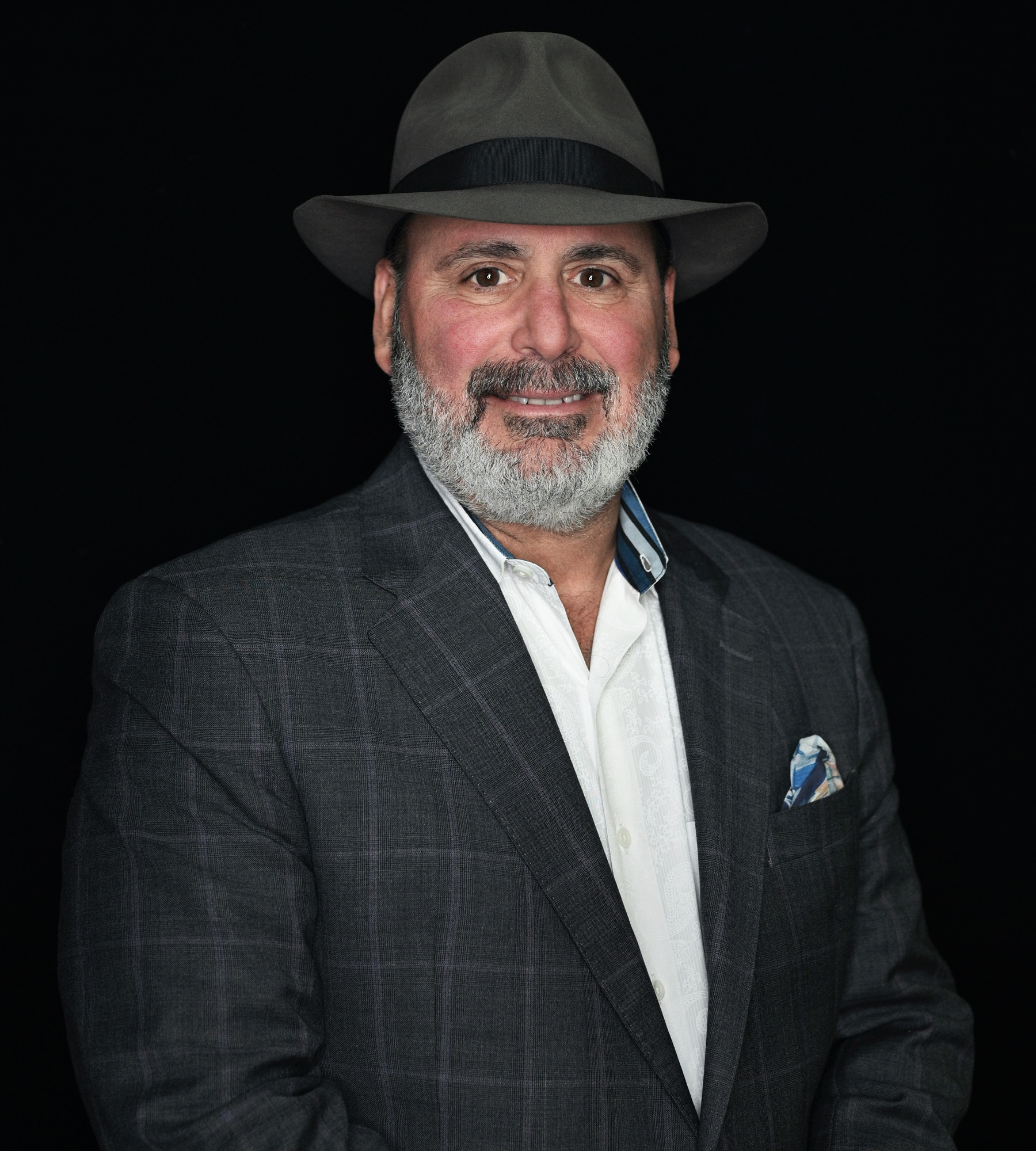Language
You can read the magazine in one of the following languages
Don Rongione’s father worked with his hands, cutting overcoats in a factory for his entire career, as one of a proud generation who labored during the heyday of US manufacturing.
“I came from a background of pride in making things in America and a growing middle class that helped to build stronger communities and a better quality of life for people who are hardworking,” Don recalls.
So when, at the age of just 26, he was offered the opportunity to become a leader at the Bollman Hat Company – one of America’s oldest hat manufacturers – he knew he’d found the place where he’d work for the rest of his life.
“The company spoke to me on many levels,” he says. “Making something you can wear gives you that additional sense of pride. I think my father instilled some of that in me at an early age. And then, the opportunities that I had early on made it difficult to even fathom leaving. There was no reason to do that because I was given incredible career opportunities.”
Bollman was founded in 1868, which meant it was already more than 110 years old when Don was asked in the early 1980s to craft a succession plan for managers and owners, who acquired the business from the Bollman family, who were now ready to retire. “As I grew to love the culture and the heritage, there was no question that this was where I was going to spend my entire career,” he remembers fondly.
In 2002, he became President and CEO. “When I took that role, I wasn’t looking for any other opportunity – this is in my blood now. I love the product and love the company and the heritage – it’s kind of who I am.”
Not many people get handed responsibility for a century-old company in their mid-20s, and even fewer continue to lead it decades later. “I was lucky, and in the right place at the right time,” he smiles.
It may have been more than just luck. Don had already worked hard throughout his time at school and college to demonstrate his leadership abilities, and he’d been president of the student-led governing bodies in both high school and college. “I enjoyed leadership positions, and someone must have seen that in me at an early age,” he says.
George Bollman wasn’t much older when he opened the business. He founded the venture at the age of 29 in Adamstown, Pennsylvania, setting up the company on Main Street after apprenticing at a nearby hat factory.
After enjoying a few years of success, he bought 22 acres of land with an old barn. In those days, before cars and trucks, the barn was a vital part of the business. It was where the company stabled the horses it used to transport its hats to the railway station, and the factory was powered by a water mill built on a nearby stream.
“Those early days were challenging in many ways,” Don shares. “There was a fire that broke out in 1875 and destroyed the factory. George rented a nearby facility to keep the employees working until the new factory was built.”
Today, the company has survived a multitude of other challenges, but its headquarters are still situated on those 22 acres of land, where the old barn is still standing. For the first 120 years of its existence, Bollman was primarily dedicated to making wool felt hats for the private-label market, meaning it did not put its own brand on its products, but sold them to other companies that did.
However, Don, who was first introduced to the company as an auditor with an accounting firm, now KPMG, fresh out of college, helped the company to implement an expansion plan that saw it acquire iconic brands such as Kangol – the hat known worldwide for its kangaroo logo – Helen Kaminski, Bailey, Betmar, Country Gentleman and hats.com.
There was no question that this was where I was going to spend my entire career.
“There wasn’t a brand identity for 120 years,” Don reveals. “The company evolved by acquiring other companies and vertical integration, focusing on domestic manufacturing and primarily a North American customer base.”
That meant acquiring hat makers that made felt, fur, straw, cloth and braided hats, as well as acquiring a wool scouring plant that cleans wool in the early stages of production, giving Bollman greater vertical capabilities. Even as it expanded to enjoy a global presence – it kept the operations of Helen Kaminski in Australia when it acquired the company, for example – it has maintained a strong focus on the high-quality American manufacturing that was so important to Don growing up.
This focus was epitomized by a Kickstarter campaign Bollman launched in 2015 to raise funds to bring dozens of original historic machines built by Kangol in the 1930s and 40s to the US. The machines, first built in the UK, create the much-loved, high-quality knit of the iconic Kangol Wool 504 hat, which is extremely difficult to replicate on modern machines.
The 504 machines were moved from the UK to China in the 1990s, but after Bollman acquired the rights to the brand, the company wanted them in the US. The Kickstarter campaign raised more than US$100,000 towards the cost of the relocation, thanks in part to support from actor Samuel L Jackson, who is perhaps the most devoted A-list celebrity to the Kangol brand.
“My grandfather wore Kangol, and I wear Kangol,” the actor says in a promotional video for the campaign. Brad Pitt, LL Cool J, Miley Cyrus, Eminem, Gwen Stefani, Kid Rock and Madonna have also worn the brand.

Another major change that Don has brought about at the company is to its ownership structure. It was one of the first things he set his mind to when he was tasked with coming up with a transition plan by the first successors to the Bollman family. “I was 24 years old with not a whole lot of business world experience, but I knew about employee stock ownership plans,” he says.
The idea, when the employee stock ownership plan was introduced in 1985, was for the workers themselves to own Bollman and in doing so, have a deeper sense of pride and personal investment in its success. “Even to this day, it is one of the things I’m most proud of in my career, even though I was pretty young and it was a long time ago,” Don beams.
“To me, that ownership culture that we built upon has really helped us to survive many, many challenging years. We have a never-say-die kind of attitude.”
That ownership culture that we built upon has really helped us to survive many, many challenging years. We have a never-say-die kind of attitude.
By making them owners, Bollman offers its employees something that many competitors can’t. “The company has a pretty modest pay structure relative to what our people could earn elsewhere,” Don admits. “But when the company is doing well, we reward people well, which keeps the ownership mindset. When we’re creating profits, we share those profits through our ESOP and through profit-sharing and management bonuses.”
It might not be every year that employees enjoy these benefits, especially if economic conditions are tough, but the shared ownership structure is about reaping the benefits of success over the long-term.
“We have had 13 employee owners who achieved 50 or more years of service,” Don explains. “Hundreds have given 40 or more years of service to the company. So it’s been the life’s work of many, many people who’ve come before me, and generations of families have worked here.”
There is also a deep sense of responsibility towards future generations who will take over at Bollman. “We’ve created what I believe is a forever company. We consider ourselves stewards of the company, who will leave it in a better condition than we found it,” he says.
Don strives to embody the company’s ownership culture with everything he does. “We have to be able to walk the talk in all we do,” he stresses. “We act like owners. It’s as simple as when I give a new employee a tour – I talk about the company’s core values and I talk about the ESOP being not just a retirement plan, but who we are.”
This mentality even goes as far as encouraging every employee to clean up after themselves and pick up their own trash, rather than running up costs with cleaning fees. “We’re going to pay somebody to pick that up, and that’s going to detract from our profits and ultimately our share as owners. So when I come upon a piece of trash in the company, regardless of whether somebody’s looking or not looking, I pick it up. And whenever I see somebody turn the lights out or pick up trash or do something above and beyond, I commend them for it,” Don says.
It’s been the life’s work of many, many people who’ve come before me, and generations of families have worked here.
Don also keeps the employee owners focused on the company’s progress with a weekly update of good news, something he has sent out without fail since March 2017. “Every Friday,” he points out. “Religiously. Even if it’s on Christmas Day.”
The update includes five to 10 good things that happened in the organization in that particular week. Since the company owns six different brands globally and operates four websites including hats.com, with people positioned all over the world, plenty of positive developments can pass by without catching people’s attention.
“Not everybody knows, including me, about all the good things that go on in the business,” Don concedes. “It might be some cool press that we’ve gotten or an Instagram influencer who’s posted something about our brands, or an employee owner who’s exhibited the core values of the business in something they did.
“After pointing these things out, I end with a positive message about what ownership means and an example, often taken from one of the experiences I had that week, of how great owners think at a more engaged level. That kind of thinking involves learning from mistakes and taking action so that they don’t happen again, as well as putting the team before ego.”

These updates have been especially important since the start of the COVID-19 pandemic, as well as throughout other challenging periods for the company. “I think that sharing good news elevates the spirits of everyone. There’s a lot of good things going on, so let’s focus on the positive and not just on the challenges and the negatives.”
At the same time as reminding people of the positives they may be overlooking, providing genuine material support to the team through times of crisis is also essential. At the start of the pandemic, the company started a care fund, with contributions from managers that were matched from the company. So when Bollman’s factory was forced to close for three months, the company was able to continue to cover healthcare costs and help employees pay their bills.
“This is all part of being real about the culture and making sacrifices that are in the best interests of the team,” Don says. “Then it’s about rewarding people well when there is the opportunity to reward people. We have ‘extra mile awards’, so when somebody exhibits our core values and positive behavior, they might receive US$100 cash and a certificate.”
There’s a lot of good things going on, so let’s focus on the positive and not just on the challenges and the negatives.
The company has also launched a new operating system aimed at creating a stronger vision around its strategic plan. The vision emphasizes Bollman’s core values, plus what Don calls “our 90-day rocks” – key priorities that the company has in the short-term – as well as a one-year plan, three-year picture and a 10-year target.
In this forward-looking process, as in everything the company does, the goal is to be radically transparent. “We share financial information willingly and purposefully. We try to ensure everybody is informed, as owners of the business, about the dynamics that affect our business. How we are performing both on a balance sheet with cash and on an income statement with sustaining profits. We share that openly,” he explains.
Don also writes a quarterly letter for everyone that summarizes the company’s financial results, offers updates on progress towards short- and medium-term goals, and discusses strategy for the future. “That’s the kind of behavior that we really want people to emulate and use as role models, and we try to have everybody be a part of it. Every meeting ends with, ‘Any ideas, suggestions, questions?’” he says.
While Don’s more than four decades at Bollman place him firmly in the annals of company history, and his leadership has seen the company undergo immense positive change, he remains modest about his contributions.
“My 40 years, while significant, are not 154 years, which is what the company has,” he shares. “I’ve tried to do my part during my time here and could not have done it without my team and family.”
